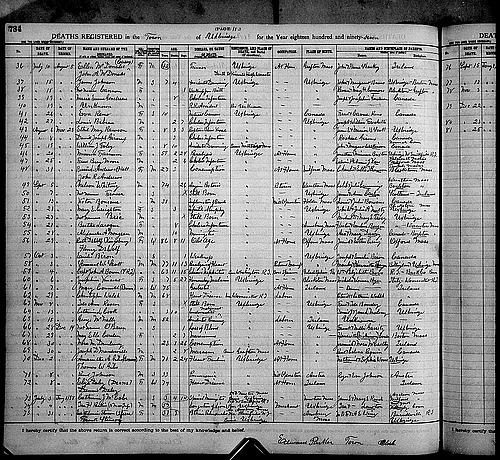Know Your Source: From Cradle to Grave, Vital Records Tell a Story

I just finished reading Peter Pan to my daughter, in which, as you may remember, the book claims that a fairy is born with every baby’s first laugh.
This is a good way to think about the importance of birth and death certificates. They are but a wisp, really, like a fairy. They are rarely seen once they are filed. And yet they are extremely powerful. Without them, much of what we know about the world’s population would disappear.
There’s another thing that makes vital registration data fairy-like. If you remember the fairies from Peter Pan, they were mischievous and elusive. Tinker Bell nearly had Wendy killed. Birth and death records can be that way, too, and I will return to that later.
First, what is vital registration? Ideally, for every person in the world, all vital events would be continuously tracked in a civil registration system that would capture births and adoptions, including data such as height, weight, and fetal maturity; deaths, including the age of the person, the cause of death, the contributing factors, and the place; marriages, divorces, separations, and annulments.
Just tracking these basic human events has an incredible downstream effect on how we are able to measure and make sense of health trends. Vital registration also helps policymakers take targeted action to improve health. For example, the U.S. Centers for Disease Control and Prevention has a National Birth Defects Prevention Study that relies, in part, on birth certificates.
In 1959, Hazel Aune, the chief of the National Consulting Service at the National Office of Vital Statistics, wrote in Public Health Reports a great history of how vital registration came to be the norm in the United States.
Most people take vital records for granted; assume we have always had them and, without much effort, will continue to have them available when we need them. The real story is quite different. It has taken more than 300 years to build our registration system.
This attitude is why, more than 50 years after Aune wrote that piece, most countries still do not have complete vital registration systems. Either they cover only a portion of the population or they cover all the population inadequately. Perhaps all births are captured but not all deaths. Or births and deaths are captured but only in urban areas.
In the United States, nearly all births and deaths are captured, but that does not mean that the records are accurate. I’ve written about this before in regard to death records. Some analyses have shown that between 15% and 20% of all causes of death in the United States are wrongly named. A doctor writes “fever” as the cause or “organ failure.” These are sometimes referred to in the epidemiology world as “garbage codes.”
This is where we get back to vital statistics being a little bit like the fairies in Neverland. They can do great good – like saving Peter from Captain Hook – but they need to be used carefully. It’s why most serious efforts to quantify the scope of a health problem or to document a trend not only use vital records as an important underpinning but also perform statistical analyses on them that consider other data. Like what?
Next I’ll write about the importance of censuses, which fill in some of the gaps between what is captured when we’re born and when we die.
Also, on another milestone-related note, I want to thank Barbara Feder Ostrov for all of her skillful editing and guidance over the past nearly four years at Center for Health Journalism Digital. Barbara knows health like few other reporters and has caught more than a few embarrassing oversights on my part before my posts went public. Her last day was Friday, and we all will miss her very much. You don’t meet many people who have the ability to juggle so many things with such positivity and grace. At least a fifth of my posts come directly from tips Barbara gave me. (She reads more widely in the health sphere than anyone I know.) So I pour a shot from a virtual fifth of bourbon and raise the glass to Barbara. May you always have the pleasure of working with people as talented and as kind-hearted as you.
Image by Scott Kraft via Flickr
